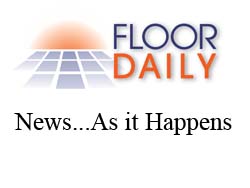Office Vacancies Continue To Climb
New York, NY, Oct. 4--The national office market continued to deteriorate in the third quarter, with vacancies continuing to climb and rents falling further, according to the Wall Street Journal. The vacancy rate rose to 16.8% in the third quarter from 16.6% in the second quarter and 15.7% a year earlier, according to a survey of the top 50 U.S. markets by Reis, Inc., a real-estate research firm in New York. Average rents declined 0.9% quarter-on-quarter to $20.85 from $21.03 per square foot. Rent prices were down 5.8% from a year ago, bad news for the real-estate industry but good for companies seeking office space. So called absorption, or the net amount of space gained or lost in the market, was negative for the 10th time in the past 11 quarters, down 5.3 million square feet. That is the largest amount of available space to come onto the market in the past five quarters. While the vacancy rate has jumped nearly 1% since the beginning of the year, it probably won't rise much more, said Lloyd Lynford, chief executive of Reis. He expects vacancies to end the year at 17%. But the office-space market appears to be nearing its bottom as long as the rebounding economy starts producing new jobs, analysts say. The economy produced more jobs than it lost last month, breaking a streak of seven consecutive months of losses, the Labor Department reported Friday. Building completions were down significantly in the third quarter, with just 4.1 million square feet of new space coming online. That is 40% less than in the second quarter and 68% less than in the third quarter of 2002. Developers and lenders have shown much greater restraint in this downturn than they did in the disastrous office market in the early 1990s. That will help the market recover more quickly than it did in the last recession. "All indications are that we've bottomed out," said Bruce Mosler, president of U.S. operations for Cushman & Wakefield, a New York-based international provider of commercial real-estate services. "There are indications of pent-up demand, and signs of improvement to come." The investment-sales market remains strong--at least for so called Class-A buildings that are well-located and well-leased. These buildings are trading at record prices as interest rates remain low, and they are more appealing to many investors than low-return fixed-income investments. So far this year, $24 billion in transactions have been conducted, 8% more than a year earlier, Mosler said. Sublease space, which puts a drag on prices as tenants with excess leased space compete with landlords to fill space, continued to drop in the quarter to 19% from a peak in the high 20% range, according to Cushman & Wakefield. But the office market, like the economy in general, has been through several false starts in the past three years, with market prognosticators seeing recovery right around the corner. In the Dallas market, already staggering from the telecommunications bust, tenants put 800,000 more square feet on the market than they took in the third quarter, raising the vacancy rate to 26% from 25.5%. Denver, also hurt by telecom woes, posted a 2.4% decrease in rents in the quarter, and its vacancy rate rose nearly a full point to 21.7% from 20.8%. Kansas City and Raleigh-Durham performed best in the second quarter, each absorbing about 400,000 square feet of office space. Kansas City's vacancy rate fell to 17.6% from 18.5% and Raleigh-Durham's vacancies fell to 20.2% from 21.5%. Some say the market faces obstacles that may be underestimated. Shadow space, which is extra room a tenant isn't using and not putting on the market for sublease, may be underestimated because of recent accounting-rules changes, said Kenneth Rudy, managing director of corporate finance for Jones Lang LaSalle, an international commercial real-estate services firm in Chicago.
Related Topics:Armstrong Flooring
